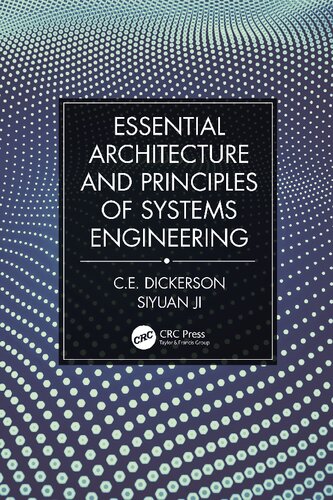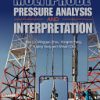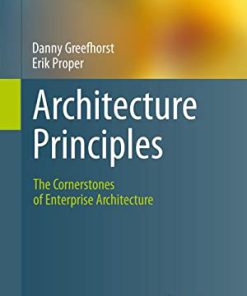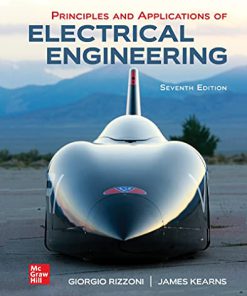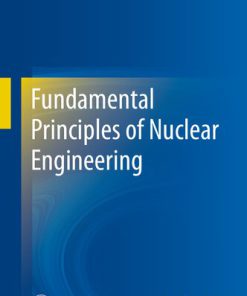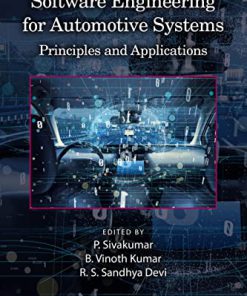Essential Architecture and Principles of Systems Engineering 1st Edition by Charles Dickerson, Siyuan Ji 781000452792 1000452794
$50.00 Original price was: $50.00.$25.00Current price is: $25.00.
Essential Architecture and Principles of Systems Engineering 1st Edition C.E. Dickerson – Ebook Instant Download/Delivery ISBN(s): 9781138550179,1138550175, 781000452792, 1000452794
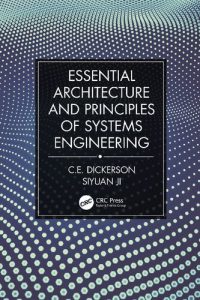
Product details:
- ISBN 10: 1000452794
- ISBN 13: 781000452792
- Author:Charles Dickerson, Siyuan Ji
Essential Architecture and Principles of Systems Engineering
Table contents:
Chapter 1 Introduction
1.1 A Brief History of Architecture
1.2 A Brief History of Model-Based Systems Engineering
1.2.1 Early History of MBSE
1.2.2 Recent History of MBSE
1.3 Invention and Utility
1.3.1 The Utility of Systems Engineering
1.3.2 The Uptake of MBSE
1.4 The Role of the Architect
Chapter 2 Logical and Scientific Approach
2.1 Experimental and Logical Basis of Science
2.2 Scientific Basis of Engineering
2.2.1 Structural Engineering Example of Using Science
2.2.2 Example of Using Science in Systems Engineering
2.3 Language, Logic, and Models
Chapter 3 Concepts, Standards, and Terminology
3.1 Systems Engineering Standards and Organisations
3.2 Definitions of Key Terms
3.2.1 Combinations, Partitions, and Arrangements
3.2.2 Structure
3.2.3 System Architecture
3.2.4 Architecture: OMG Definition in MDA 1.0
3.2.5 Architecture: Essential Definition
3.2.6 Model
3.2.7 Functionality
3.2.8 Engineered System
3.2.9 System: Essential Definition
3.2.10 Engineering
3.3 Mathematical Interpretation of Architecture
3.3.1 Application to Engineering the ADAS ECG
3.3.2 Correct Use of Mathematical Language
3.4 Logical Models of Concepts
3.5 Model-Based Systems Engineering
Chapter 4 Structured Methods
4.1 Scope of Concerns and Synthesis of Concepts
4.1.1 Alignment of Definition Processes to System Life Cycle
4.1.2 Modelling Languages and Logic
4.1.3 Functional Requirements for the ADAS ECG
4.2 Structured Analysis
4.2.1 Framework for Structured Analysis
4.2.2 Models for Structured Analysis
4.3 Structured Design
4.3.1 Framework for Structured Design
4.3.2 Models for Structured Design
4.4 Realising the Solution Concept for the ADAS ECG
4.5 Summary and Synthesis
Part I Bibliography
PART II Tutorial Case Study: End-to-End Demonstration
Chapter 5 Tutorial I: Air Traffic Control System Essential Model
5.1 Transformation of Concepts into Requirements
5.2 Modelling System Functionality
5.3 System Behaviour Model
5.4 Air Traffic System of Systems
5.5 Specification of the Essential Model
5.6 Summary of Model Specifications and Transformation
5.6.1 Refinement of the System Concept
5.6.2 Model Types and Transformation
Chapter 6 Tutorial II: Air Traffic Control System Architecture
6.1 Concurrent Functional Definition and Allocation
6.2 Subsystem Behaviour Integration
6.2.1 Behaviour of Individual Subsystems
6.2.2 Behaviour of the Integrated Subsystems
6.3 System Structure Model
6.4 Subsystem Interaction Model
6.5 Specification of the Essential Architecture
6.6 Summary of Model Specifications and Transformation
6.6.1 Refinement of the System Concept
6.6.2 Model Types and Transformation
Chapter 7 Tutorial III: Air Traffic Control System Final Solution
7.1 Iterative Architecture Development
7.1.1 Alternative Behaviour
7.1.2 Control Structure
7.1.3 Integration of Scenarios and Behaviours
7.2 Interface Definition
7.2.1 Interface Identification
7.2.2 Interface Modelling
7.3 Architecture Analysis
7.3.1 Radar Performance Analysis
7.3.2 Air Traffic Flow Analysis
7.4 Specification of the Implementation Model
7.4.1 Software Specification
7.4.2 Hardware Specification
7.4.3 Interface Specification
7.4.4 Model Specifications for Design Definition
7.5 Summary of Model Specifications and Transformation
7.5.1 Refinement of the System Concept
7.5.2 Model Types and Transformation
7.6 The Art of System Architecting and Design
PART III Modelling Languages
Chapter 8 Modelling Languages I: Functionality and Behaviour
8.1 A Brief Overview of UML
8.2 Use Case Diagram
8.3 Activity Diagram
8.4 UML for Holistic Architecture Specification
Note
Chapter 9 Modelling Languages II: Structure and Interoperation
9.1 Class Diagram
9.1.1 Attributes
9.1.2 Operations
9.1.3 Associations
9.1.4 Generalisation
9.1.5 Instantiation
9.2 Sequence Diagram
9.3 Modelling versus Architecting
Chapter 10 Modelling Languages III: SysML Extensions
10.1 Block Definition Diagram
10.2 Internal Block Diagram
10.3 Requirement Diagram
10.4 Integrated Usage of UML and SysML
PART III Bibliography
PART IV Case Studies for Practice and Practitioners
Chapter 11 Case Study: Traffic Management System of Systems Architecture
11.1 System Definition
11.1.1 Class Exercise and Procedure
11.1.2 Class Assessment
11.1.3 System Concept Description
11.1.4 Instructor Guidance
11.2 Architecture Definition
11.2.1 Class Exercise and Procedure
11.2.2 Class Assessment
11.2.3 System Concept Description
11.2.4 Instructor Guidance
11.3 Architecture Refinement, Analysis, and Final Solution
11.3.1 Class Exercise and Procedure
11.3.2 Class Assessment
11.3.3 System Concept Description
11.3.4 Instructor Guidance
Chapter 12 Case Study: System of Actuator Systems Architecture
12.1 Single Actuator System Architecture
12.1.1 Class Exercise and Procedure
12.1.2 Class Assessment
12.1.3 System Concept Description
12.1.4 Instructor Guidance
12.2 Multiple Actuator System Architecture
12.2.1 Class Exercise and Procedure
12.2.2 Class Assessment
12.2.3 Safety Analysis Summary
12.2.4 Instructor Guidance
Part IV Bibliography
Annex A-1: Essential Mathematics
Annex A-2: Logical Modelling of Language
Annex A-3: Terminology for Architecture and Systems
Annex A-4: Research Impact and Commercialisation
Annex A-5: Using This Book for a One-Semester Module of Lectures
Index
People also search:
essential architecture and principles of systems engineering
essential architecture and principles of systems engineering pdf
what is the purpose of systems engineering
essential architecture books
systems engineering principles and practice 3rd edition pdf
You may also like…
Computers - Information Systems
Romance - Historical Romance
Fortress Of Snow A Dericott Tale 1st edition by Melanie Dickerson ISBN 0785250808 978-0785250807
Technique - Transport
Principles and Practices of Transportation Planning and Engineering 1st Edition Tang Connie
Computers - Hardware
Business & Economics - Others
Engineering - Energy & Power Resources
Fundamental Principles of Nuclear Engineering Jiyang Yu 9811608385 9789811608384
Engineering - Automotive

